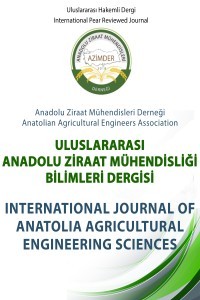
Uluslararası Anadolu Ziraat Mühendisliği Bilimleri Dergisi
Yazarlar: Serap KIZIL AYDEMİR, Yeter ÇİLESİZ, Muhammad Azhar NADEEM, Tolga KARAKÖY
Konular:Ziraat, Ortak Disiplinler
Anahtar Kelimeler:Cassava,Manihotes culenta,Energy plant,Growing
Özet: Cassava is a plant species belonging to the family Euphorbiaceac. Motherland of cassava is Brazil. According to 2015 data, cassava is planted in an area of 22.732.193 hectares in the world, yield value is 15.35 tons / ha and production is realized as 296.7 million tons. 50% of the cassava produced in the world is obtained in Africa, 30% in Asia and 20% from Latin America. Cassava has been used as a food source in many countries for centuries. Today, it is consumed by millions of people in developing countries and is sometimes used as a herbal medicine. The cassava's tubers are very energy-rich and contain mainly starch and some soluble carbohydrates, but are poor in protein. The tuber obtained from the cassava plant contains a higher proportion of dry matter than other tuberous and rooted plants. Cassava tubers contain 30-40% dry matter. The most important compound in the dry matter content is starch and sugar. This accounts for about 90% of dry matter. Metabolic energy in dry cassava 3500-4000 kcal / g. is similar to corn flour. FAO explained that cassava is the third most important energy source after rice and corn. Many countries are currently conducting important research on the use of cassava as ethanol biofuel. Under the 11th 5-year development plan, China aimed to produce 200 thousand tons of biodiesel by 2010. This is equivalent to 10 million tons of oil. The cassava plant, which can adapt to different growing conditions, soil type and fertilizer quantity, can give good yield even in places where other crops cannot grow. Cassava is an important crop energy crops can be grown in the arid and unproductivel and in Turkey.